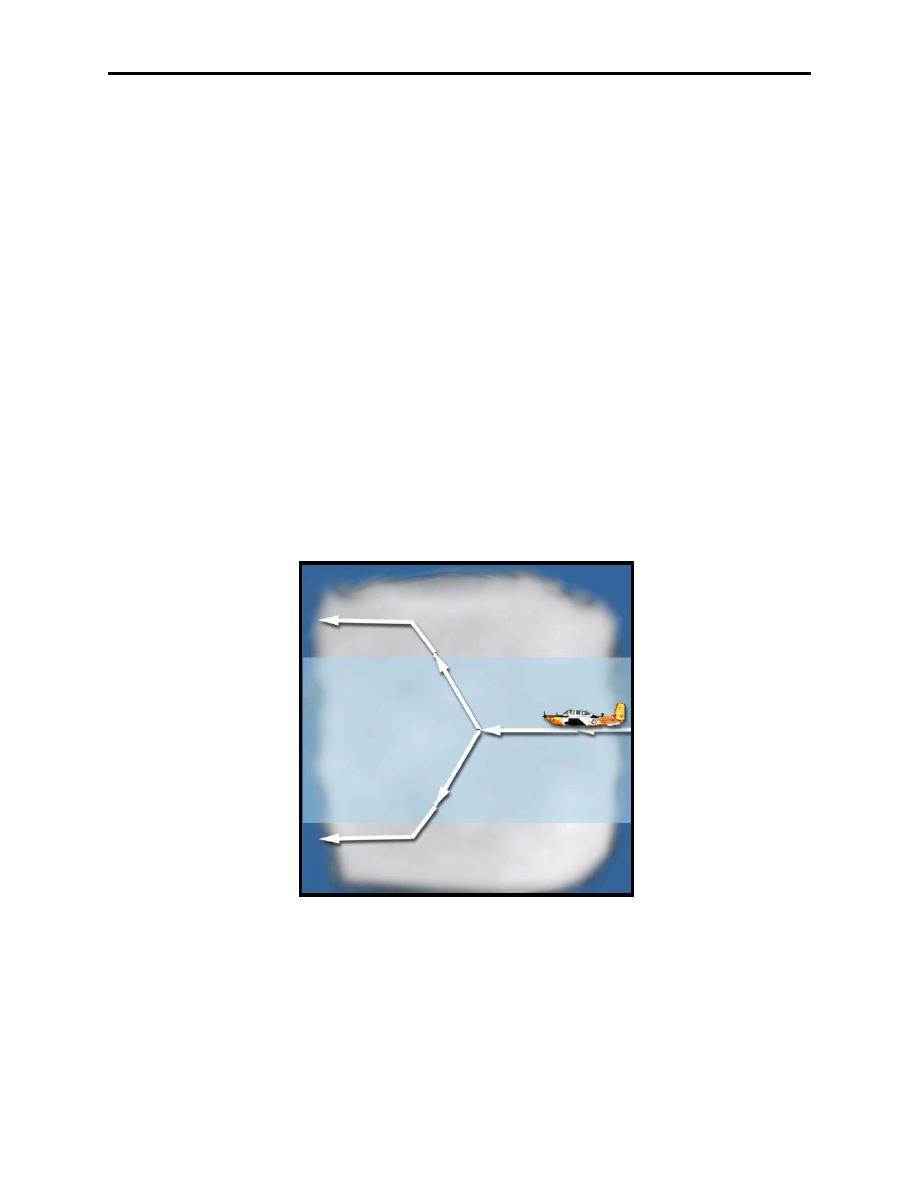 |
|||
|
|
|||
|
|
|||
| ||||||||||
|
|  AVIATION WEATHER
CHAPTER FIVE
Ground icing hazards we have already stressed the importance of removing all icing and frost
from an aircraft prior to takeoff. De-icing itself, however, can also be a hazard. De-icing fluids
(discussed in the next section) are highly corrosive to internal aircraft and engine parts. Thus, it
is imperative de-icing crews understand the particular requirements for your type of aircraft.
Additionally, taxiing through mud, water or slush on ramps and runways can create a covering of
ice that can hamper the movement of flaps, control surfaces, and the landing gear mechanism.
Ice and snow on runways are conditions that affect braking action of aircraft. Braking action
varies widely with aircraft type and weight. Therefore, pilots must be aware of the limits to their
aircraft's braking capabilities.
508.
MINIMIZING OR AVOIDING ICING HAZARDS
Flight Path Options
In coping with an icing hazard in flight, a pilot usually has two alternatives. First, the pilot can
climb to the colder temperatures where the precipitation will be frozen and therefore not an icing
hazard. Second, the pilot can descend to an altitude where the air temperatures are well above
freezing (Figure 5-12). However, if encountering clear icing in the freezing precipitation below
the clouds of a warm front, the aircraft is most likely in the cold air ahead of the warm front. In
this case, the best alternative may be to climb to warmer temperatures, across the frontal
boundary, as the freezing precipitation may extend all the way to ground level.
Figure 5-12 Options to Escape Icing
Anti-Icing and Deicing Equipment
Deicing equipment eliminates or removes ice already accumulated on the aircraft. Anti-icing
equipment prevents the accumulation of ice on specific aircraft surfaces. Most military aircraft
Weather Hazards of Turbulence, Icing, Ceilings, Visibility, and Ash Clouds
5-17
|
|
Privacy Statement - Press Release - Copyright Information. - Contact Us |